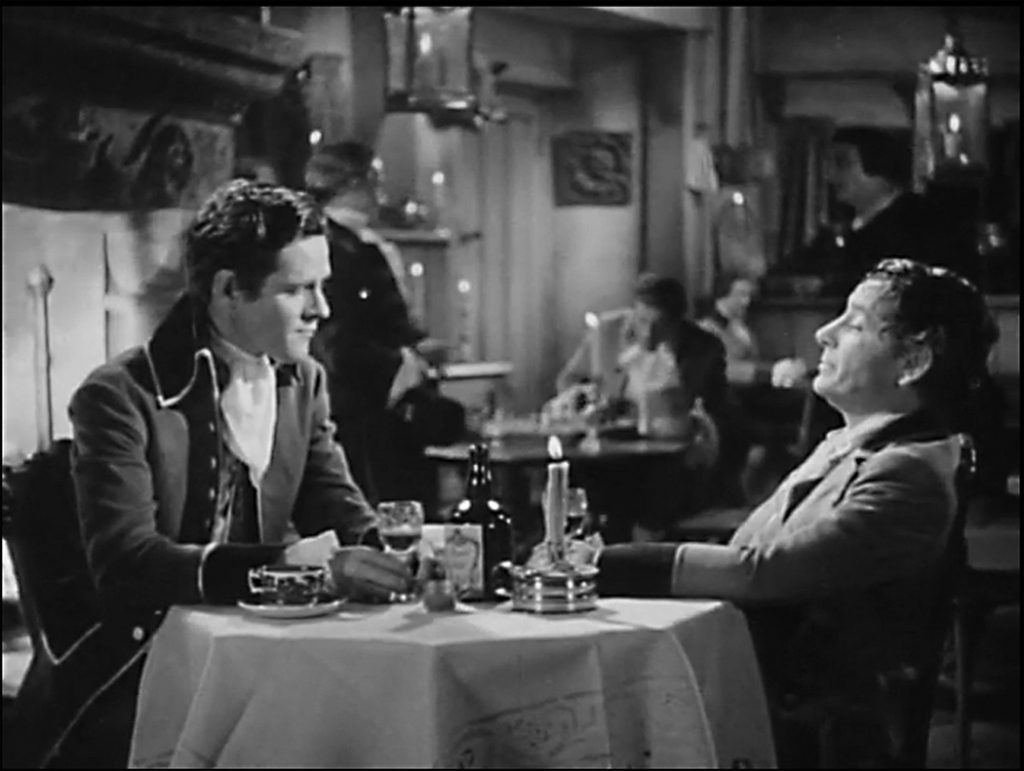
“It was the best of times, it was the worst of times. . . .” A Tale of Two Cities
In 1935, Metro Goldwyn Mayer’s adaptation of Charles Dickens’s immortal novel from 1859 found its well-deserved place on the big screen. A Tale of Two Cities revisits the tiered societies of London and Paris in the days when rebellion within France’s lower class led to the French Revolution. Dickens’s fictional and unusual love story includes Madame DeFarge (played by Blanche Yurka), who famously knitted at the guillotine “stadium” while she witnessed routine executions of aristocrats who were blamed for the hardships of the peasants.
A Tale of Two Cities highlights the stratified demographic in the final decades of the 1700s, although exact dates of the French Revolution differ according to which source is used. France’s “old order” had recognized two classes, clergy and nobility, while most of the population belonged to the “third estate” of small landowners, members of the working class, and those in dire poverty, which Dickens was all too familiar with.
But this violent rebellion seemed coincidentally parallel during the time period of our own American Revolution, when the Colonies revolted against high taxes and declared their independence from the Crown. Little did we know . . . declaring ourselves a nation wouldn’t fix our economic concerns, it would just bring them closer to home.
As with most civilizations throughout history, including our own—which is one reason why this film sticks with me, the struggles of the lower classes are of little concern to the ruling class. And A Tale of Two Cities captures this indifference in one of its earlier scenes. When a nobleman named Marquis St. Evrémonde (played by Basil Rathbone) speeds down a city road, his horse-drawn carriage accidentally kills a young boy. Stepping out of the carriage to address the grief-stricken father, Evrémonde expresses his annoyance with unsupervised children who disrupt his travels and irritate his horses.
A Tale of Two Cities opens with the delivery of a coded message, “Recalled to life,” which is also the title of the first of the three sections of the Dickens book. Soon after, we meet Dr. Manette (Henry B. Walthall), the aging gentleman to whom the message refers. Manette was freed from the Bastille after 18 years’ imprisonment without a trial. He returns home to his daughter Lucie, who grew up believing he was dead. Though we learn who instigated Manette’s arrest, the film doesn’t elaborate on the reason, but apparently Manette learned something through his medical practice about a particular family who preferred to keep their secrets private. So even the aristocracy is subject to grave injustices.
The power of this black-and-white, Oscar-nominated film is driven by Dickens’s poignant story under the fine direction of Jack Conway. And the superb cast of actors (all born in the 1800s) includes Elizabeth Allen as Lucie Manette, Donald Woods as Lucie’s husband Charles Darnay, and Edna May Oliver as Lucie’s devoted servant Miss Pross, who adds some levity to the script.
Most notable of all is Ronald Colman, the superb and charming leading man who became a Hollywood legend. He plays hard-drinking British lawyer Sydney Carton, the man who steers the story, and we can’t stop watching him. He has a perfect sense of delivery that never pushes his intoxication into a cliché. He always maintains control. But in spite of his wisdom and charm and legal career, Carton believes his life is wasted—that he cares for no one and doesn’t deserve to be loved. When he falls in love with Lucie, Carton is crushed to learn she’s engaged to Charles Darnay, but he settles for being Lucie’s friend. And like a tonic, their friendship inspires him to be a better person. But we could never imagine what Carton might offer Lucie as a friend, and how her needs might give his life more meaning.
The flow and delivery of this story is gripping, especially since dialogues from the earlier years of film could be excessively long and clichéd. But A Tale of Two Cities creates a well-paced, satisfying story with nothing overdone. If you don’t know the story, be prepared. If you do know it, you should still see this superb movie that’s worth each of its 123 minutes. You’ll find it streaming on various platforms, including a replay on YouTube. But make sure you’re watching the 1935 version, which is considered superior to the remakes. You’ll also find Dickens’s book on the Project Gutenberg free e-book site. But the unfamiliar British dialect of the mid-1800s requires some deciphering—and gives you one more incentive to watch the film.
This exceptional MGM production by David O. Selznick will leave you processing the film long after it’s over.
